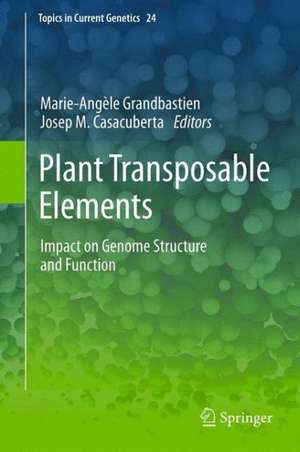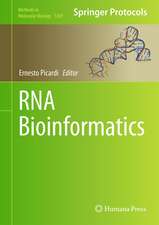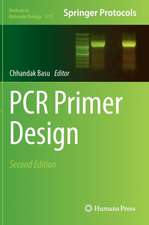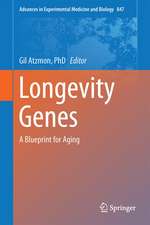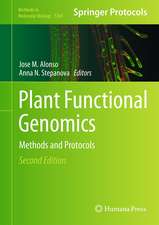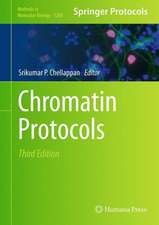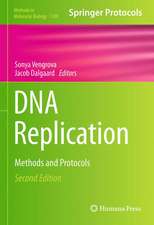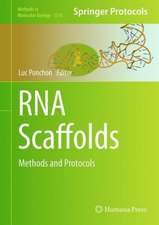Plant Transposable Elements: Impact on Genome Structure and Function: Topics in Current Genetics, cartea 24
Editat de Marie-Angèle Grandbastien, Josep Casacubertaen Limba Engleză Hardback – 8 ian 2013
| Toate formatele și edițiile | Preț | Express |
|---|---|---|
| Paperback (1) | 1219.01 lei 6-8 săpt. | |
| Springer Berlin, Heidelberg – 19 iun 2015 | 1219.01 lei 6-8 săpt. | |
| Hardback (1) | 1223.55 lei 6-8 săpt. | |
| Springer Berlin, Heidelberg – 8 ian 2013 | 1223.55 lei 6-8 săpt. |
Din seria Topics in Current Genetics
- 18%
 Preț: 1227.99 lei
Preț: 1227.99 lei - 18%
 Preț: 947.35 lei
Preț: 947.35 lei - 18%
 Preț: 1220.75 lei
Preț: 1220.75 lei - 18%
 Preț: 1833.16 lei
Preț: 1833.16 lei - 18%
 Preț: 1228.62 lei
Preț: 1228.62 lei - 18%
 Preț: 1833.16 lei
Preț: 1833.16 lei - 18%
 Preț: 1223.55 lei
Preț: 1223.55 lei - 18%
 Preț: 1224.06 lei
Preț: 1224.06 lei - 18%
 Preț: 1837.88 lei
Preț: 1837.88 lei - 18%
 Preț: 1551.11 lei
Preț: 1551.11 lei - 18%
 Preț: 1239.37 lei
Preț: 1239.37 lei - 18%
 Preț: 1826.07 lei
Preț: 1826.07 lei - 18%
 Preț: 1226.11 lei
Preț: 1226.11 lei - 18%
 Preț: 1216.78 lei
Preț: 1216.78 lei - 18%
 Preț: 944.51 lei
Preț: 944.51 lei - 18%
 Preț: 949.73 lei
Preț: 949.73 lei - 18%
 Preț: 1227.52 lei
Preț: 1227.52 lei - 18%
 Preț: 1226.90 lei
Preț: 1226.90 lei - 18%
 Preț: 1826.85 lei
Preț: 1826.85 lei - 18%
 Preț: 2100.25 lei
Preț: 2100.25 lei - 18%
 Preț: 954.93 lei
Preț: 954.93 lei - 18%
 Preț: 1827.63 lei
Preț: 1827.63 lei - 18%
 Preț: 1228.96 lei
Preț: 1228.96 lei
Preț: 1223.55 lei
Preț vechi: 1492.14 lei
-18% Nou
Puncte Express: 1835
Preț estimativ în valută:
234.16€ • 243.56$ • 193.31£
234.16€ • 243.56$ • 193.31£
Carte tipărită la comandă
Livrare economică 15-29 aprilie
Preluare comenzi: 021 569.72.76
Specificații
ISBN-13: 9783642318412
ISBN-10: 364231841X
Pagini: 344
Ilustrații: XII, 330 p.
Dimensiuni: 155 x 235 x 24 mm
Greutate: 0.61 kg
Ediția:2012
Editura: Springer Berlin, Heidelberg
Colecția Springer
Seria Topics in Current Genetics
Locul publicării:Berlin, Heidelberg, Germany
ISBN-10: 364231841X
Pagini: 344
Ilustrații: XII, 330 p.
Dimensiuni: 155 x 235 x 24 mm
Greutate: 0.61 kg
Ediția:2012
Editura: Springer Berlin, Heidelberg
Colecția Springer
Seria Topics in Current Genetics
Locul publicării:Berlin, Heidelberg, Germany
Public țintă
ResearchCuprins
So many repeats and so little time - How to classify transposable elements.- Transposable element annotation in completely sequenced eukaryote genomes.- Using nextgen sequencing data to investigate genome size variation and transposable element content.- Genome-wide analysis of transposition using Next Generation .-Sequencing technologies.- Hitching a ride: Non-autonomous retrotransposons and parasitism as a lifestyle .- Plant endogenous retroviruses? A case of mysterious ORFs
MITEs, miniature elements with a major role in plant genome evolution.- Glue for jumping elements: Epigenetic means for controlling transposable elements in plants.-
Responses of transposable elements to polyploidy.- Noise or symphony: comparative evolutionary analysis of sugarcane transposable elements with other grasses .- Helitron proliferation and gene-fragment capture.- Transposable Element exaptation in plants.- SINE exaptation as cellular regulators occurred numerous times during eukaryote evolution.- LTR retrotransposons as Controlling Elements of genome function .- Rider transposon insertion and phenotypic change in tomato.- Retrotransposons and the eternal leaves.
MITEs, miniature elements with a major role in plant genome evolution.- Glue for jumping elements: Epigenetic means for controlling transposable elements in plants.-
Responses of transposable elements to polyploidy.- Noise or symphony: comparative evolutionary analysis of sugarcane transposable elements with other grasses .- Helitron proliferation and gene-fragment capture.- Transposable Element exaptation in plants.- SINE exaptation as cellular regulators occurred numerous times during eukaryote evolution.- LTR retrotransposons as Controlling Elements of genome function .- Rider transposon insertion and phenotypic change in tomato.- Retrotransposons and the eternal leaves.
Recenzii
From the reviews:
“For the 16 chapters of this volume, the editors have brought together contributors from all corners of the diverse field of transposon biology. … This volume is pitched to both transposon biologists and to nonspecialists. … the book provides a good introduction to this very broad research field and will be a key reference for specialists.” (J. Arvid Ågren, The Quarterly Review of Biology, Vol. 88 (3), September, 2013)
“For the 16 chapters of this volume, the editors have brought together contributors from all corners of the diverse field of transposon biology. … This volume is pitched to both transposon biologists and to nonspecialists. … the book provides a good introduction to this very broad research field and will be a key reference for specialists.” (J. Arvid Ågren, The Quarterly Review of Biology, Vol. 88 (3), September, 2013)
Textul de pe ultima copertă
Transposable elements are DNA sequences with the capacity to move within a genome. Although their presence and impact has long been known, the recent genome-wide analysis of many eukaryotic genomes has uncovered their major role in genome dynamics and function. The present book explains how to recognize and study transposable elements, e.g. by using state-of-the-art strategies based on new-generation sequencing. Moreover, the impact of transposable elements on plant genome structure and function is reviewed in detail and illustrated in examples and case studies.
The book is intended both for readers familiar with the field and for newcomers. With large-scale sequencing becoming increasingly available, more and more people will come across transposable element sequences in their data, and this volume will hopefully help to convince them that transposable elements are not just "junk" DNA, and may actually be the most interesting and fun part of their data!
The book is intended both for readers familiar with the field and for newcomers. With large-scale sequencing becoming increasingly available, more and more people will come across transposable element sequences in their data, and this volume will hopefully help to convince them that transposable elements are not just "junk" DNA, and may actually be the most interesting and fun part of their data!
Caracteristici
Ø Provides state-of-the-art strategies for transposon recognition and study Ø IIIustrates the impact of transposable elements on genome structure and function Ø Suitable for both experts and newcomers to the field Includes supplementary material: sn.pub/extras Includes supplementary material: sn.pub/extras
